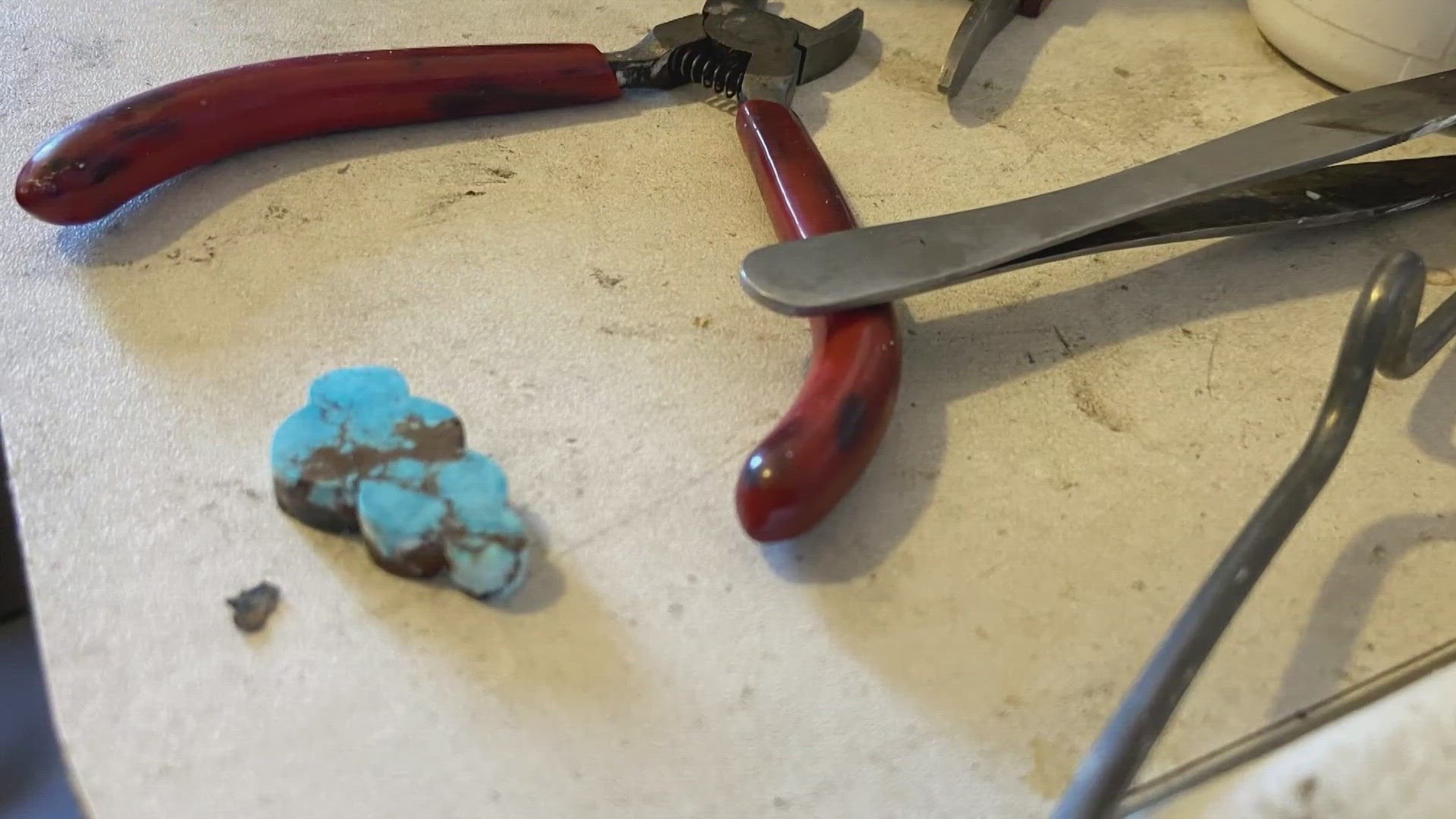PHOENIX — Tourists and online shoppers who want to buy authentic Native American arts and crafts may have a tough time discerning between what’s real and what’s imported.
They have good reason to be skeptical.
Federal prosecutions of counterfeit retailers have identified products that were manufactured overseas and then sold in the U.S. as “authentic Native American art.” A longtime Navajo jewelry store owner said in the Southwest region of the U.S. there are wholesale dealers who sell products that originate from China, Tawain and the Philippines. Some “Navajo” rugs are actually made in Pakistan.
“Of course it’s offensive. It’s our livelihood,” said Lyndon Tsosie of House of Stamps located in Gallup, New Mexico.
Tsosi said there are legitimate retail shops that sell indigenous products. The key is knowing where to look. Meanwhile, an effort is underway on the federal level to improve protections for Native artisans.
Seek out the artists, talk to local galleries and cultural centers
“It’s always best to talk to them (artists) one one-on-one, or talk to them through social media,” Tsosie said.
While shopping in person, ask for a card of authenticity with the artist’s name. Many Native artists - including Navajo rug weavers, squash blossom jewelry makers and painters - have profiles online, Tsosie said.
“If a product is legitimate, they (sellers) will go out of their way to tell you who made it,” Tsosie said.
Art galleries and cultural centers are also reliable resources for finding out where authentic Native products can be found in a given community. Better Business Bureau ratings can also provide reliable information about a business’s reputation, Tsosie said.
Resources online to find authentic native products in the Southwest
Some tribal nations provide resources online for authenticated work. 12News also identified the following online resources for authentic Native American art in the Southwest:
- In the Phoenix area, the indigenous-owned Native Art Market links sellers to buyers online.
- Project Dream Catcher provides a list of Native American women entrepreneurs who graduated from a business development program at the Thunderbird School of Global Management
- Navajo Silversmith Lynn Benally sells handmade jewelry online through her business Lynn Designs. 12 News recently visited Benally’s studio near Window Rock. “From raw material comes something so beautiful, so intricate,” Benally said. “When I was nine years old my grandfather took me aside and told me, ‘one day this is what you’re going to be doing’.”
- Galleries such as Southwest Native Originals and Adobe Gallery have longstanding reputations for contemporary and historic art
Tsosie said social media like Instagram and Facebook have opened avenues for Native artists to sell directly to buyers.
“This is the new American Indian, having the artistry and living off it in a harmonious way. You become your own king, if you will, in the financial world of making a living,” Tsosie said.
Federal push to update Indian Arts and Craft Act
This year the Bureau of Indian Affairs is proposing updates to the landmark 1990 Indian Arts and Craft Act, including a “Made in America” requirement and a new certification trademark to certify an item as an “Indian Product.”
Other potential updates include expanding the definition of an Indian Product and allowing non-Indian labor to work on Indian products (this is viewed as a way to make running a business easier for indigenous business owners).
The Senate Committee on Indian Affairs is proposing legislation that would strengthen enforcement of the Indian Arts and Crafts Act, according to Tribal Business News
Tsosie wants tougher enforcement but said proposals are fraught with politics.
“When you throw politics into anything, then you get roadblocks. You get people on the right and on the left but they really don’t ever ask the jeweler, or the bead maker, or the potter or the rug weaver; How do the standards affect them?”
The federal government just wrapped up a nationwide public comment period on the proposed regulations.
Feds prosecute counterfeit vendors
Vendors found guilty of selling counterfeit Native art risk prosecution.
This month the Department of Justice secured a 2-year prison sentence for a business owner selling phony indigenous art that was actually made in the Philippines. The punishment is the most severe ever for violation of the Indian Arts and Crafts Act. Two co-conspirators are also awaiting trial.
“Fakes and counterfeits, such as those marketed for huge sums of money by the Rodrigos, tear at the very fabric of Alaska Native culture, Native livelihoods, and Native communities,” said Indian Arts and Crafts Board Director Meridith Stanton in a news release.
In 2018, a New Mexico jewelry store owner was sentenced to six months in prison for selling Filipino-made jewelry as Native American art, according to KRQE.
Up to Speed
Catch up on the latest news and stories on the 12News YouTube channel. Subscribe today.

